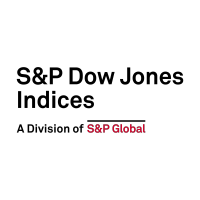Tag Archives: Target Date
Closing the Retirement Gap with Indices
How can indices help retirees achieve retirement income goals? Nobel Laureate and Resident Scientist at Dimensional Fund Advisors, Dr. Robert Merton joins S&P DJI’s Dan Draper and Aye Soe for a deep dive into the U.S. retirement ecosystem.
- Categories Equities, Fixed Income
-
Other Tags
401k, Aye M. Soe, Dan Draper, DB plans, DC Plans, defined benefit plans, defined contribution plans, Dr. Robert Merton, ESG indices, FIAs, Financial Advisors, fixed index annuities, indexing, insurers, LDI, Liability driven investing, multi-asset indices, multi-factor indices, passive investing, pension funds, retirement annuities, retirement planning, S&P 500, S&P Dow Jones Indices, S&P Stride, SECURE Act, target date indices
- Categories
- Equities, Fixed Income
- Other Tags
- 401k, Aye M. Soe, Dan Draper, DB plans, DC Plans, defined benefit plans, defined contribution plans, Dr. Robert Merton, ESG indices, FIAs, Financial Advisors, fixed index annuities, indexing, insurers, LDI, Liability driven investing, multi-asset indices, multi-factor indices, passive investing, pension funds, retirement annuities, retirement planning, S&P 500, S&P Dow Jones Indices, S&P Stride, SECURE Act, target date indices
Performance of the New S&P Risk-Managed Target Date Indices
In a previous blog, we explored the glide paths of the S&P Risk-Managed Target Date Indices. In this post, we will compare the index construction of the S&P Risk-Managed Target Date Indices with that of the S&P Target Date Indices and examine their performance. Index Construction of the Baseline S&P Risk-Managed Target Date Indices Each…
- Categories Multi-Asset
- Other Tags
Introducing the S&P Risk-Managed Target Date Indices
S&P DJI recently launched the S&P Risk-Managed Target Date Indices. In this post, we will explore the characteristics of these indices in detail. Each index consists of two component indices: a baseline S&P Target Date Index based on an underlying glide path and an S&P 500® Managed Risk 2.0 Index. The S&P 500 Managed Risk…
- Categories Strategy
- Other Tags
The Target Date Industry Needs Appropriate Benchmarks
Target date funds have seen tremendous growth. At the end of 2019, assets in target date mutual funds reached nearly USD 1.4 trillion, impressive growth from USD 256 billion a decade ago.[1] Other than a brief dip in the fourth quarter of 2018, the growth of assets has been fairly stable with an upward trajectory…
- Other Tags
Standard Benchmarks Extend Standard of Living Through Retirement
What are the steps in selecting a retirement income option? Of course cost is one of the considerations, but did you know ERISA does not require selecting the lowest cost investments? These questions and more are explored in a recent video with Ian Kopelman (DLA Piper), and Tim Kohn (Dimensional Fund Advisors): What are some best…
- Categories Equities, Fixed Income, Strategy
- Other Tags
Benchmarking Retirement Withdrawal Strategies
Capital market benchmarks are, of course, widely used yardsticks of investment performance. For the production of the S&P STRIDE Index, in addition to providing performance data we also calculate hypothetical retirement income for vintages of the index that are at, or past, their target date. Hypothetical retirement income is expressed in index points, and can…
- Categories Equities
- Other Tags
- Categories
- Equities
- Other Tags
The Power of a Consensus Glide Path
Some who follow target date fund (TDF) performance have taken note that lately, the S&P Target Date Index Series has outperformed many TDFs. In most historical periods, index performance was middle of the pack. However, 2015 was an exception, as shown in Report 2 of our Year-End 2015 Target Date Scorecard. Every vintage of the…
- Categories Uncategorized
- Other Tags
- Categories
- Uncategorized
- Other Tags
Make Room for a New Target Date Category
Defined contribution (DC) plans, such as 401(k)s, place challenging demands on individuals, the highlights of which are to save diligently (which implies having adequate income, as well as budgeting abilities), to rationally select from among numerous investment vehicles, and to judiciously transition from wealth accumulation to income generation as retirement approaches. Innovations in plan design,…
- Categories Uncategorized
- Other Tags
Benchmarking target date funds (TDFs) with market-driven indices ≠ performance chasing.
At their core, TDFs are professionally managed asset allocation policies. Questions therefore naturally arise around how (or even whether) they should be benchmarked with market indices. The investor(s) on whose behalf a particular policy is undertaken may have highly subjective criteria for success that have very little to do with outperforming market benchmarks. For example,…
- Categories Uncategorized
- Other Tags
- Categories
- Uncategorized
- Other Tags













































